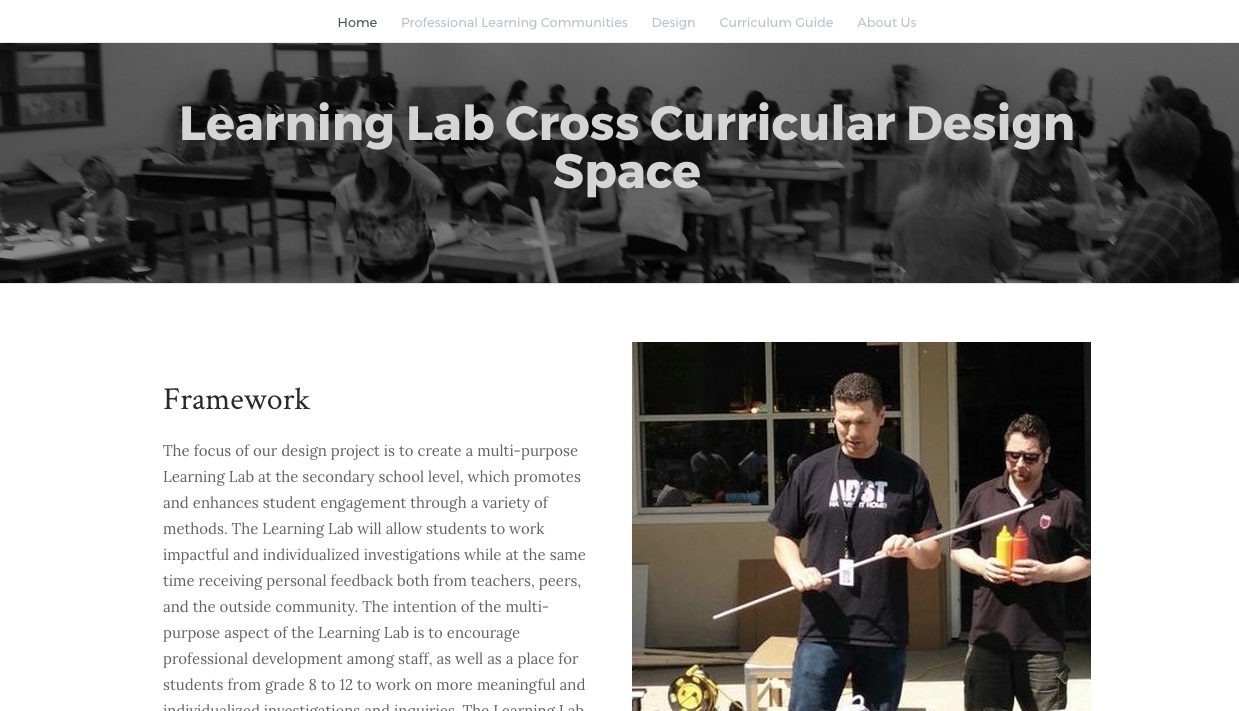When making a Weebly for Learning Labs, I realized that I didn’t know very much about the latest technologies being used in education at this point in time. The first time I heard about Makerspace was when I came into contact with “Makey-Makey” at the beginning of the school year, prior to getting into this MET program. While taking ETEC-510 this semester, Makerspaces was something that I researched on for our Designs Project Proposal. I learned that a Makerspace is just a collaborative work area where both students and teachers can use to inquire about meaningful questions/projects we may have. Students are expected to create their own knowledge of the world through constructing and creating their own objective reality. This got me thinking about what was my “Makerspace” when I went to school, and from what I recall, I thoroughly enjoyed doing DIY projects in the woodwork shop during my high school years. Our Tech-Ed teacher would make us design woodworking projects by: drafting out the dimensions of our project using AutoCAD, doing a materials cost sheet, cutting our own wood and then putting it all together. I spent most of my Grade 12 year in that workshop creating many projects for the school which include: library bookshelves, tables, fixing cabinets/doors/desks/bookshelves for teachers, doing theatre displays … pretty much anything that needed to be fixed, I would do it. A lot of what I would do was through trial and error, where I constructed my own knowledge, much like what we have designed in this curriculum guide. The only thing different is that I didn’t have access to the technologies my students have now, such as: 3D printers, iPads with apps, laptops, etc. When researching about this topic, I got inspired to create a space like this for my students at Stride Elementary, so I’ve been collaborating with another teacher to turn one of our rooms into a Makerspace.
This leads me into my second inquiry: PLCs or Professional Learning Communities. Again, I had no idea what this term meant and how it contributes to education. My guess was a bunch of professionals/teachers learning together; I wasn’t far off. The ultimate goal of PLCs is to improve student achievement by: a group of educators coming together in a collective effort to enhance student learning, builds knowledge through inquiring, promoting/sustaining the learning in the school, and analyzing the data for reflection and improvement. In simpler terms, it is teachers coming together to share ideas for lessons/units that they will plan collaboratively and use at their schools. I’m always a fan of collaborating with other teachers when unit planning, because there are a million different ways to learn something, and hearing two, five, or even ten different perspectives allows me to develop lessons/units that values many perspectives. When talking about transforming one of the Resource rooms into a Makerspace, I didn’t know that I would be engaging in my own little PLC. Together, we have written up proposals to local hardware stores to donate tools for our room. Home Depot has given us numerous discounted crates (of all sizes) for our DIY crates theme we have for Term 3. At first, only 1 student showed up during lunch break to work on this with us, and now we are up to 10 on a good day! We have brought in many of our old electronics and goods (laptops, computers, tv’s, hair dryers, toasters, etc) for our students to take apart and try to diagnose the problem and troubleshoot to fix them. Our room doesn’t consist of much at the moment, but my colleague and I are working to build this room over the next couple of years so that it will have all the necessary technologies needed for our students to inquire. James and I wanted our students to have a room in which they feel empowered to explore by themselves and with others. It makes me so happy that our students are constructing knowledge themselves, because teachers no longer transfer knowledge to students; instead, teachers are now active learners and facilitators of knowledge.
Lastly, I would love to develop a Weebly with resources on educational technologies and games for new teachers. As a new teacher myself, I can’t explore things that I have never heard about or don’t even know exists. I believe that all our projects in this class, and the many more projects we will come across in our MET degree can be put into a Weebly so that new teachers can sift through this resource and learn how to use them properly and effectively in our schools. I believe that 2 minds is better than 1, but a community of 30 intelligent and diverse teachers will allow this ETEC 510 class to help the teachers collaborate and become more well-rounded. We will be teachers that value collaboration and diversity, while modelling and promoting life-long learning.
